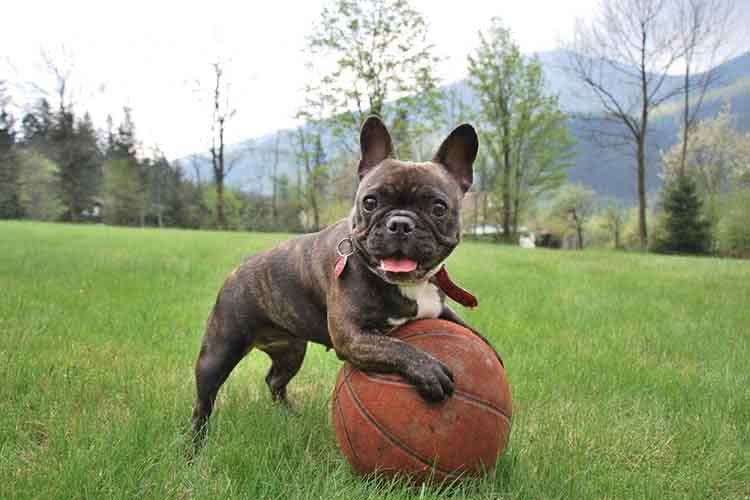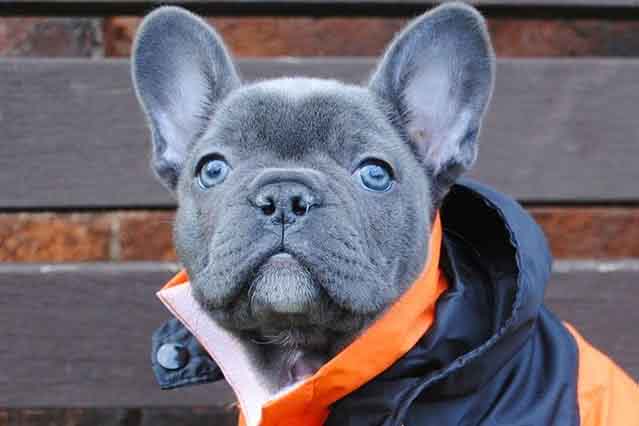If you are researching the Frenchie breed or getting a French Bulldog in the near future, one of the first conditions you need to familiarize yourself with is IVDD. IVDD is a serious condition that is French Bulldogs are genetically predisposed to due to being “low rider dogs” aka dogs with short legs.
In this blog we will talk more about what IVDD is, the symptoms, as well as prevention. IVDD can be prevented but is often not due to lack of knowledge, so hopefully you will be more informed and able to take preventative measures after finishing this read.
What is French Bulldog IVDD?
Intervertebral disc disease (IVDD) is a condition where the cushioning discs between the vertebrae of the spinal column either bulge or burst (herniate) into the spinal cord space. These discs then press on the nerves running through the spinal cord causing pain, nerve damage, and even paralysis.
IVDD is a disease that effects the spinal cord over time, but it might not be apparent until there is a trigger. Unfortunately, a dog who appears to be completely healthy one day may take a fall or jump in such a way that a disc becomes ruptured. IVDD is a degenerative (gradual) process, but a jump or fall can damage a disc that has already been weakened by IVDD and bring on an acute phase of the disease.

How to recognize the symptoms of IVDD in French Bulldogs?
Made up of a gelatinous substance surrounded by a thick outer layer, intervertebral discs are basically the shock absorbers of the spine.
There are two types of disc herniation seen in dogs: Type I and Type II, of which Type II generally has less severe signs and symptoms.
Recognizing the symptoms of IVDD in French Bulldogs and offering instant medical attention is the crucial part of the recovery process. If these symptoms appear visit a vet RIGHT AWAY.
Symptoms can range from mild to severe and can include:
• Unwillingness to jump
• Pain and weakness in rear legs
• Knuckling under
• Paralysis
• Crying out in pain
• Muscle spasms over back or neck
• Hunched back or neck with tense muscles
• Reduced appetite and activity level
• Loss of bladder and/or bowel control
Diagnosing and reversing/treating IVDD
A veterinary examination will generally include a neurological exam, X-rays, and/or special imaging (myelogram, CT scan, MRI) to locate the source of spinal injury. If the diagnosis reveals mild to moderate injury, treatment may include the administration of steroids and anti-inflammatory medications to reduce swelling and pain, with confined rest required for four to six weeks or so.
In more severe cases, surgery may be advised to open up the space around the spinal cord. Surgery has a better chance of being successful if the dog has not lost the ability to walk and if surgery is done very soon after diagnosis (within 24 hours). If a dog has already lost the ability to walk before surgery, the prognosis is not optimal.
Post-surgical physical rehabilitation is often recommended for muscle strengthening. If a surgery is not successful, a dog wheelchair is often recommended, which can give the dog a healthy, active life despite the disease.

7 Steps To Prevent IVDD in French Bulldogs
As a future French Bulldog owner, it’s important to get as familiar with the breed as possible. A responsible breeder will inform you about potential risks as well as measures of prevention when it comes to French Bulldog IVDD prevention.
IVDD isn’t something all French Bulldogs develop. A genetic predisposition doesn’t equal disease onset. However it is very important to follow these preventative measures to lower the possibility of your Frenchie being affected as much as possible.
1. Keep Your French Bulldog PUPPY As Lean as Possible
The most important step to prevent IVDD in French Bulldogs is to keep your dog’s weight down to eliminate extra stress on the neck and back. Like we mentioned in a previous blog, the ideal body shape is one where the waist can be visible, and ribs easily felt.
Puppyhood weight will determine adulthood weight. If you are over-feeding your French Bulldog puppy, the dog will develop more fat cells, which equals a fat adult. So this right here is a number one mistake owners make right there. They want a cute, chunky, roly-poly pup.
Unfortunately that equals - health problems in the future.
**2. Harness Vs. Collar **Use a harness when walking your French Bulldog. Not only can using a collar cause difficulty breathing in a brachycephalic dog breed, but it can also put extra stress on the neck and put your dog at risk for IVDD.
We recommend:
**3. Limit Jumping **This is a hard one, I know. They are dogs and of course they love being active, which involves high impact activities like jumping on and off high furniture.
But if a ramp/doggie stairs case is introduced at a young age and your Frenchie is trained to use only that specifically, they might never realize that jumping from beds and couches is even an option.
IVDD in French Bulldog really is no joke, so don’t hesitate to get a doggie ramp sooner rather than later.
**4. Healthy Diet **Feed your French Bulldog a high quality diet consisting of animal protein as it’s first ingredient to promote lean muscle growth. 99% kibbles on the market unfortunately do not contain the adequate amount of meat, or should we say an adequate amount of anything,
Your dog needs to be fed a raw diet that consists of raw meaty bones, meat and organs. The bones will build a solid skeleton for your dog, unlike artificial calcium supplements found in kibble.
You also can’t expect to produce puppies with healthy skeletons if the pregnant bitch is fed a cereal based, calcium supplemented commercial dog food. Puppy growth starts in the womb.
**To learn more about the biologically appropriate diet for dogs, also called BARF, click here. **
**5. Do not Spay/Neuter until your dog is fully grown. **You can stunt your dogs growth by spaying/neutering early on. Let your French Bulldog grow fully before committing to the procedure.
Fixing your puppy at an early age not only puts them at risk for IVDD, but also puts them at risk for hip dysplasia, obesity and bone cancer.
Useful reading material below, if you are curious to learn more about the ideal time to spay/neuter your pet.
Final Thoughts
We hope this blog provided you with the knowledge needed to prevent IVDD onset in your French Bulldog.
Keep in mind, if IVDD symptoms arise seek medical attention right away. Every hour is crucial and waiting too long can cause irreversible damage.
##



